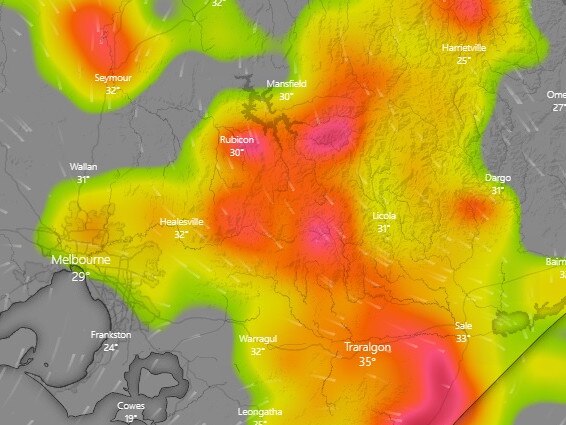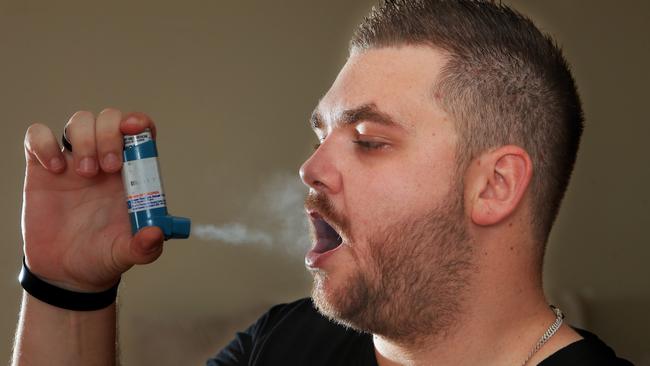Alert issued about ‘high risk’ thunderstorm asthma situation in Victoria
After damaging winds and heavy rain caused havoc, the worst of Sunday’s wild weather has passed Melbourne.

The worst of Sunday’s wild weather has passed Melbourne, with damaging winds and heavy rain expected to clear Victoria by 9pm.
Emergency services responded to more than 200 requests for assistance in central Victoria alone between 3-4pm.
“This includes 164 calls due to trees crashing down and 24 calls reporting building damage or collapses,” an SES spokeswoman said.
“Eltham was the most affected suburb followed by Thornbury, totalling the most calls for assistance.
“Storm activity is now crossing over the Gippsland area, but it looks to be slowly clearing.”
The weather bureau previously issued a severe thunderstorm warning for destructive winds over the next several hours in the state’s north, with Yarrawonga recording wind gusts of 100 km/h on Sunday afternoon.
The warning has since been downgraded.
Locations affected included Bendigo, Shepparton, Seymour, Maryborough, Ballarat, Geelong, Melbourne, Wodonga, Wangaratta, Traralgon and Bairnsdale.
The bureau also issued a severe weather warning for the state’s west and east, with damaging north-westerly winds averaging 60-80km/h expected to hit parts of Gippsland.
It comes as health authorities increased an epidemic thunderstorms asthma warning in regional Victoria.

The Department of Health on Saturday warned of high risk conditions in the state’s North East and East Gippsland across the weekend.
“Today’s epidemic thunderstorm asthma risk is high in four of the nine weather districts in Victoria and moderate in central and West and South Gippsland,” the department said in a statement.
“The combination of forecast high grass pollen levels and thunderstorms with strong winds means that there is a chance that a large number of people may develop asthma symptoms over a short period of time.”

Authorities pleaded with those who suffered asthma to be particularly cautious given hospital services were already grappling with “significant demand” of Covid-19 patients.
The department advised those in the high risk regions to adhere to the following steps:
- Monitor the epidemic thunderstorm asthma risk forecast on the VicEmergency app
- Avoid being outdoors in a storm, especially the winds that precede them
- Take your preventive medication as directed, even when you’re symptom free
- Carry your reliever and know how to manage an asthma attack. Follow your asthma action plan or use asthma first aid.
The daughter of a broadacre farmer in the state’s north east says that if the thunderstorms bring heavy rain, it “could be catastrophic”, with some crops yet to come in.


